30 Years of Volkswagen Rallye Golf
Anyone who thinks of Volkswagen in rally racing will of course quickly have their eyes set on the commitment in the World Rally Championship (WRC) with the Polo R WRC between 2013 and 2016. However, VW’s history in this type of motorsport goes back considerably further. Even with the legendary Beetle, some drivers dared to venture on the muddy paths of rallying, supported by the factory, an in the Group A World Championship of the late 1980s they were also around. Here it was the Golf II GTI that served as the base vehicle. From 1986 to 1988 they were able to achieve a number of respectable successes, including the Group A title in 1986 with Kenneth Eriksson. The company wanted to build on these successes, but had to develop the car further in order to compete against competitors such as Lancia with the Delta Integrale, Ford with the Sierra RS Cosworth, Toyota with the Celica or Mazda with the 323 GTi-R. Therefore, a Golf II with widened fenders and other technical details was created in the motorsport department, which also received a new face with angular instead of the usual round headlights. According to the Group A regulations, 5,000 units of this vehicle had to be produced in series in order to officially use the rally car in competition. For this reason, Volkswagen presented the Rallye Golf at the beginning of 1989 as the absolute top model of the series with a basic price of 46,500 DM – almost twice as expensive as a normal Golf GTI at the same time. This high price meant that the American Volkswagen importer decided not to offer the Rallye Golf in Canada and the USA. Until 1991, the required 5,000 units were produced in Forest near Brussels/Belgium.
In addition to the angular fenders and the modified front section, the Rallye Golf received one-piece bumpers at the front and rear in body color, a spoiler lip at the front and a small roof-edge spoiler at the rear. The taillights were partly darkened in the upper area. It was only available as a three-door model and was usually equipped with a sunroof as standard, which actually didn’t contradict its use as a homologation car. In the late phase of production, VW produced 50 cars without a sunroof, all of which were equipped with full leather upholstery. Otherwise where were sports seats from Recaro, electrically adjustable exterior mirrors, power windows and various car radios for an extra charge. Under the bonnet sat a 1.8-liter four-cylinder engine from the Golf GTI, which, thanks to the then revolutionary G-charger, had 118 kW/160 hp. In the rally car it was even up to 270 hp. With the 1,763 cubic centimeters displacement, the conversion factor of 1.7 applied to charged engines brought the cubic capacity to just under three liters, thus the car was allowed to drive in the corresponding Group A category. Via a manual five-speed gearbox, the power was transmitted to the permanent Syncro all-wheel drive system and from there to the 15-inch wheels. Compared to the standard Golf, the power steering got a more direct setup and ABS was standard. For rallying, Volkswagen Motorsport developed an even hotter version of this engine with 16 valves and more power, which wasn’t used in competition finally.
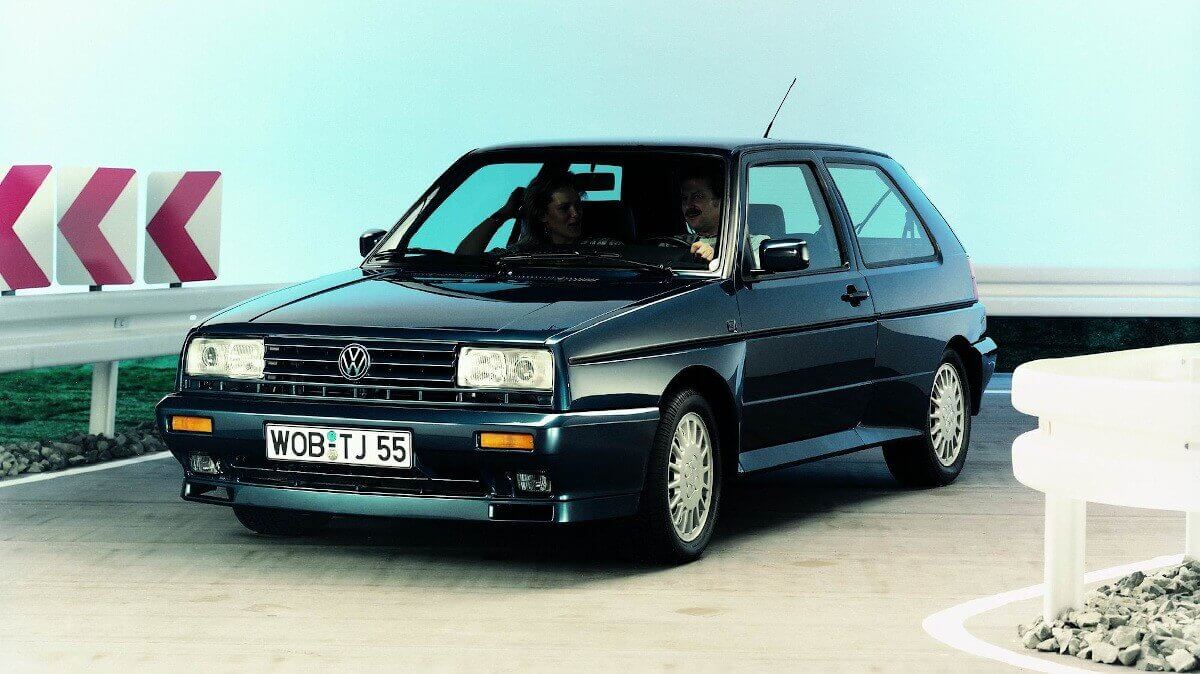







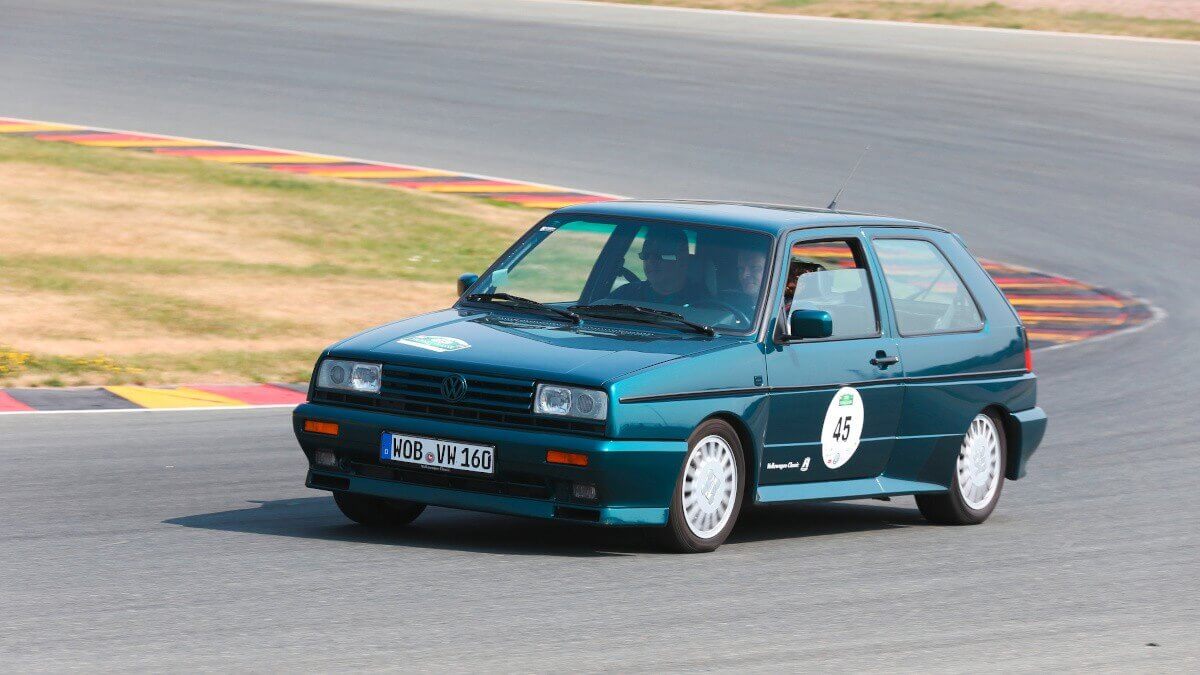



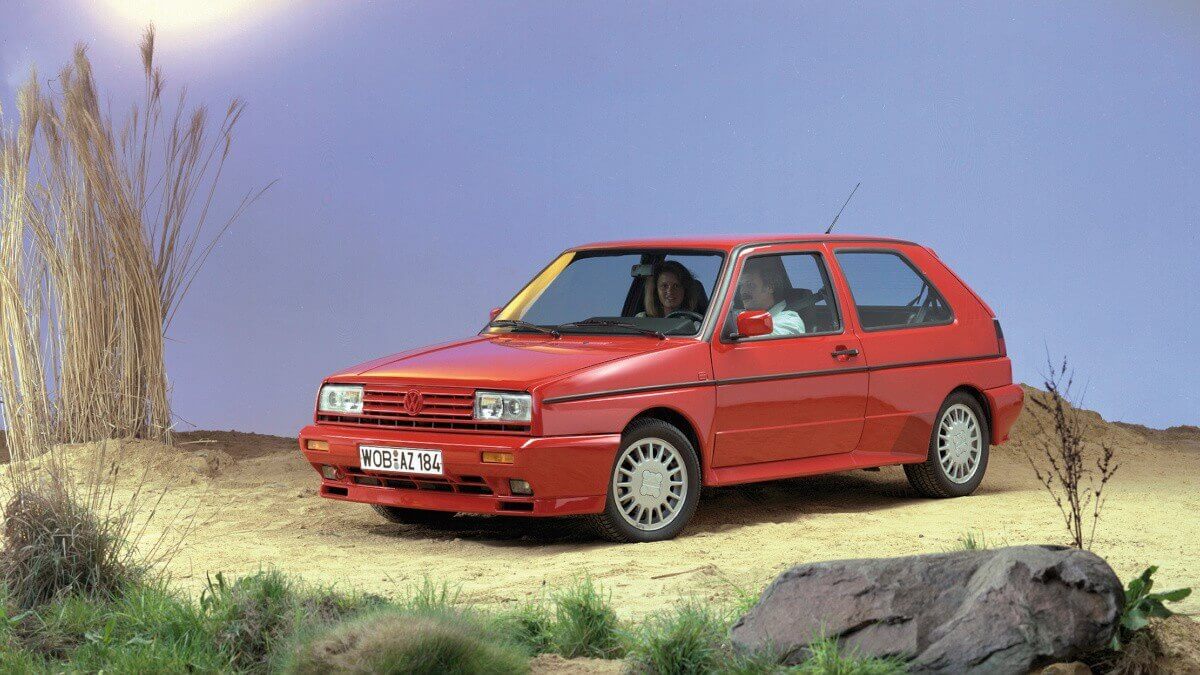



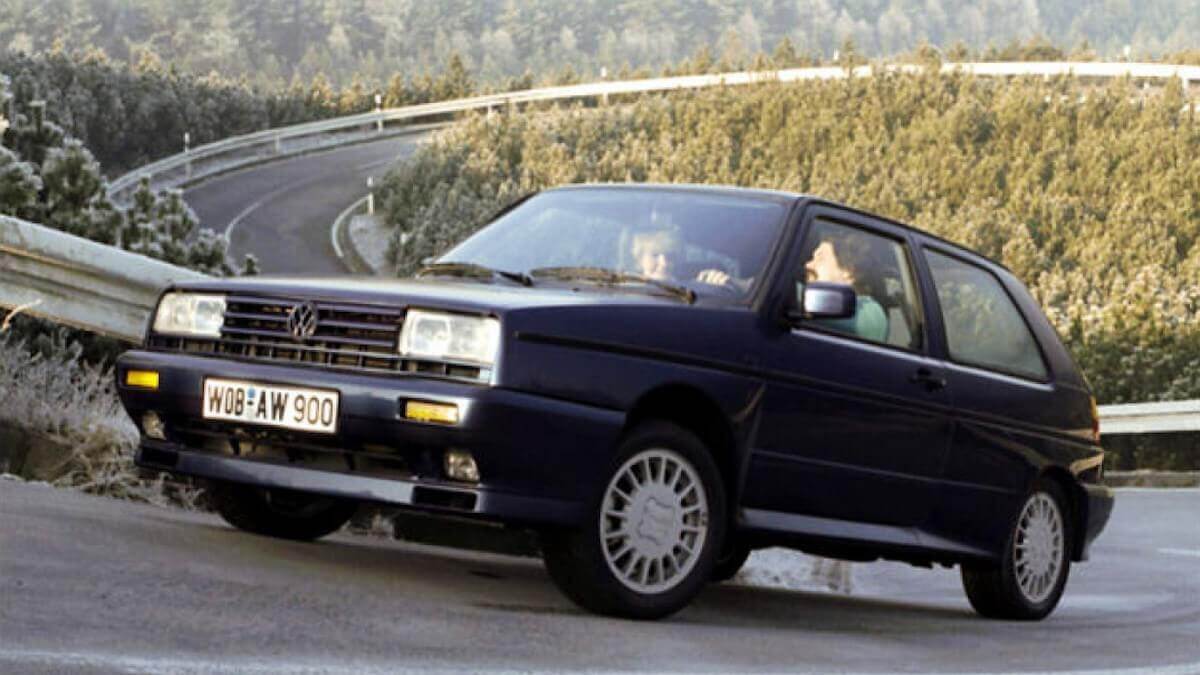







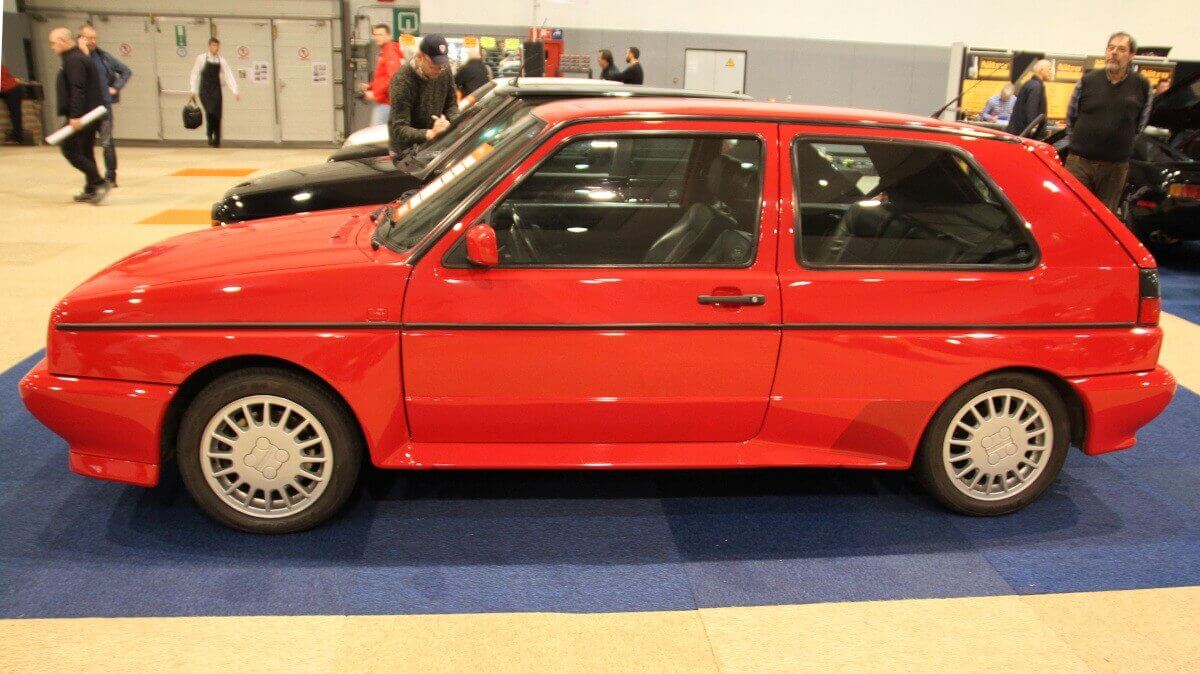



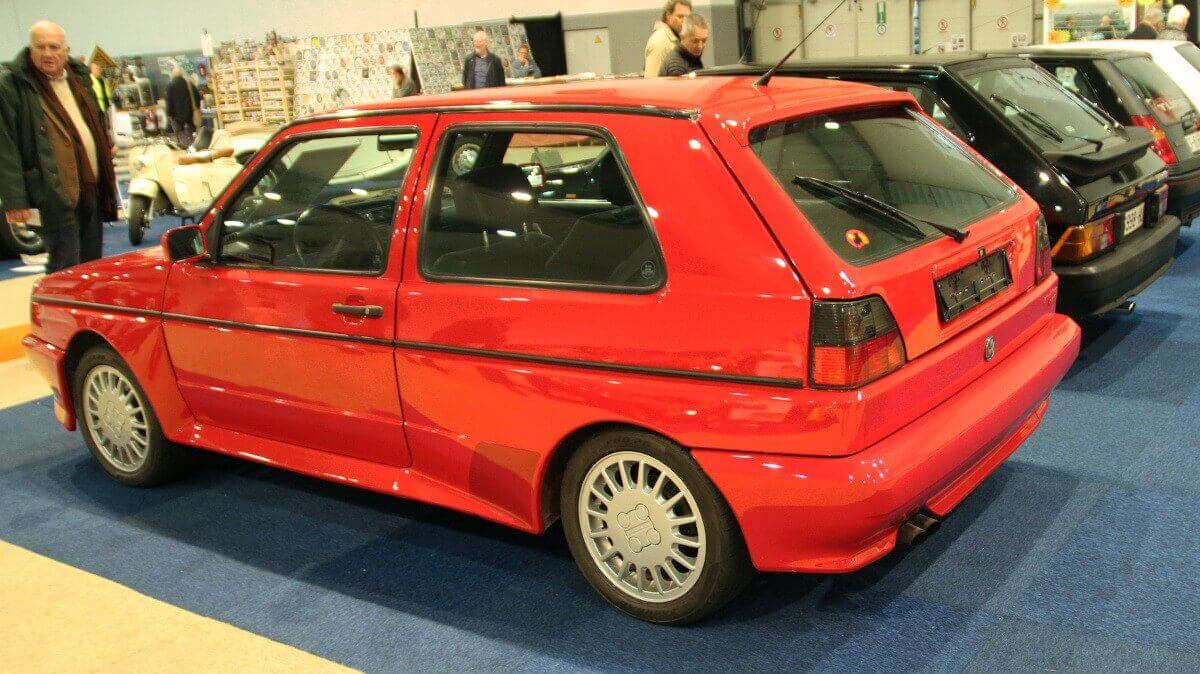



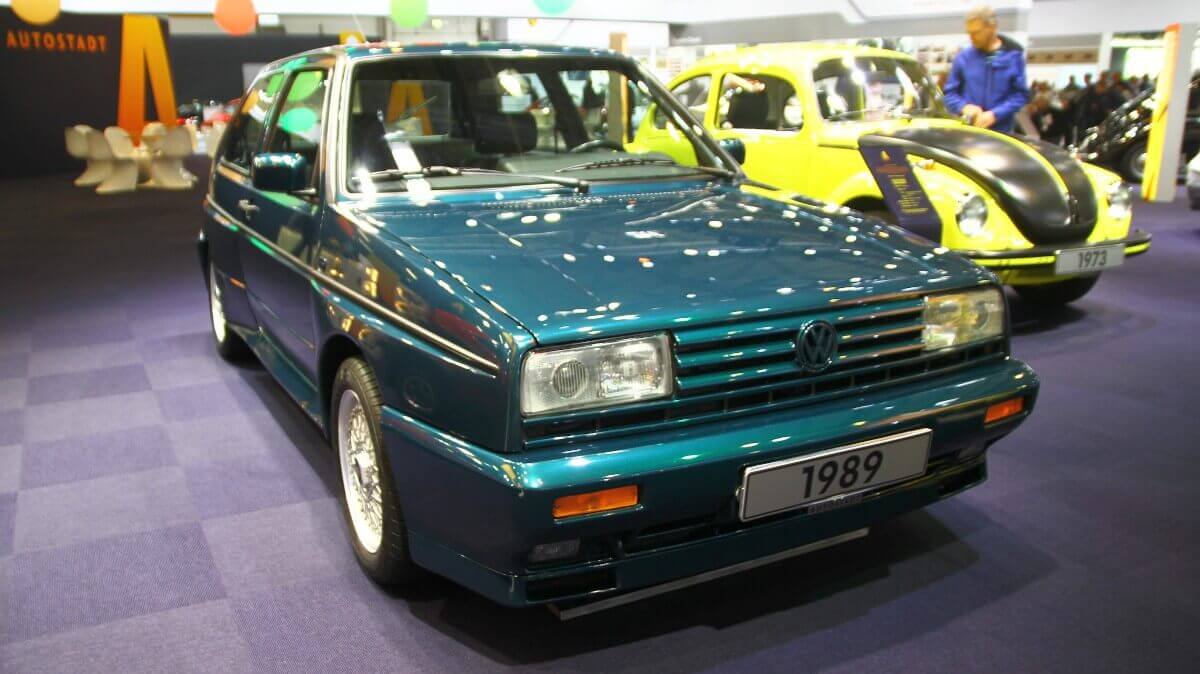







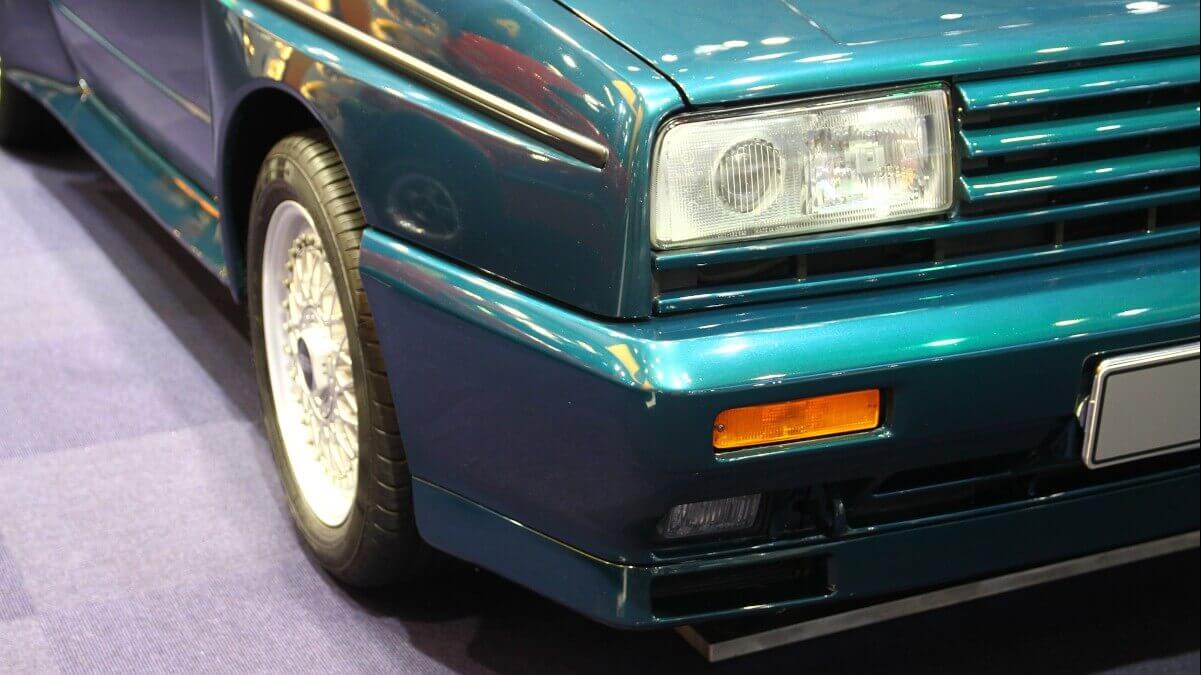



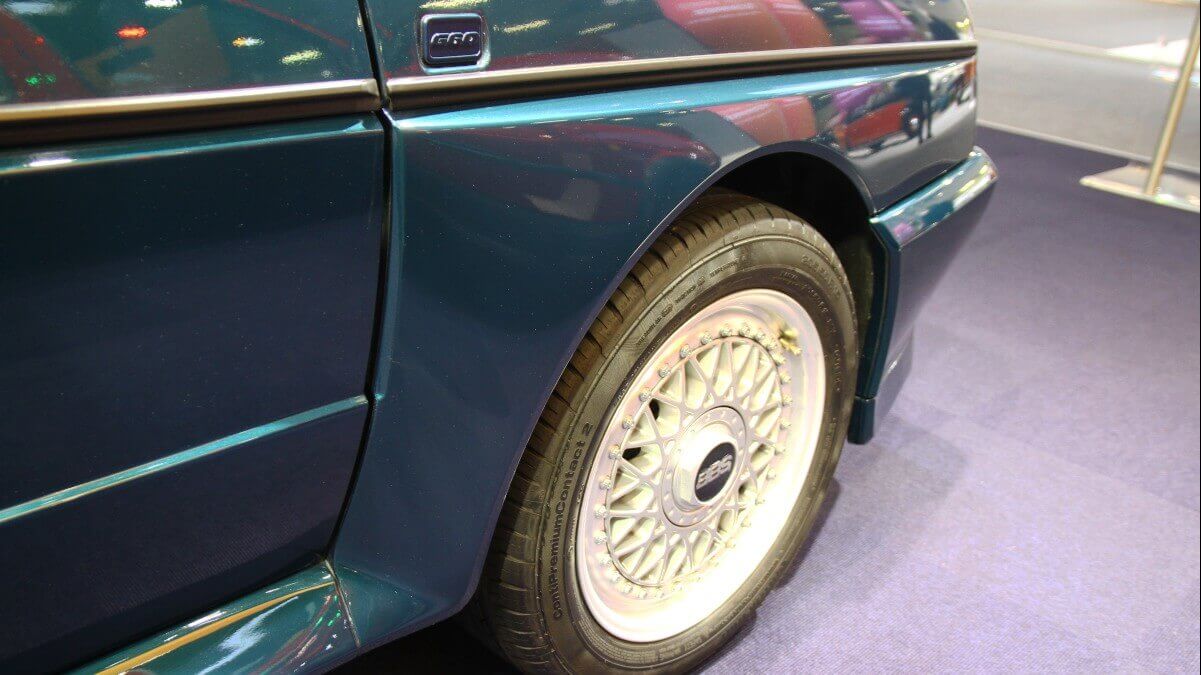







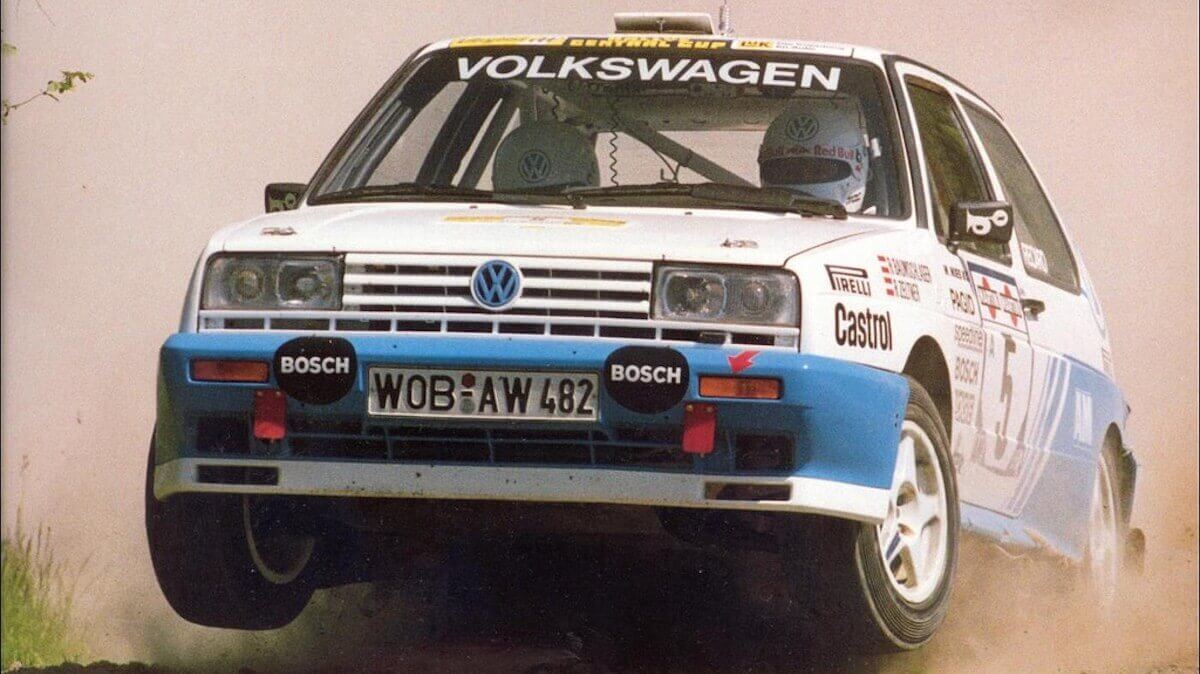



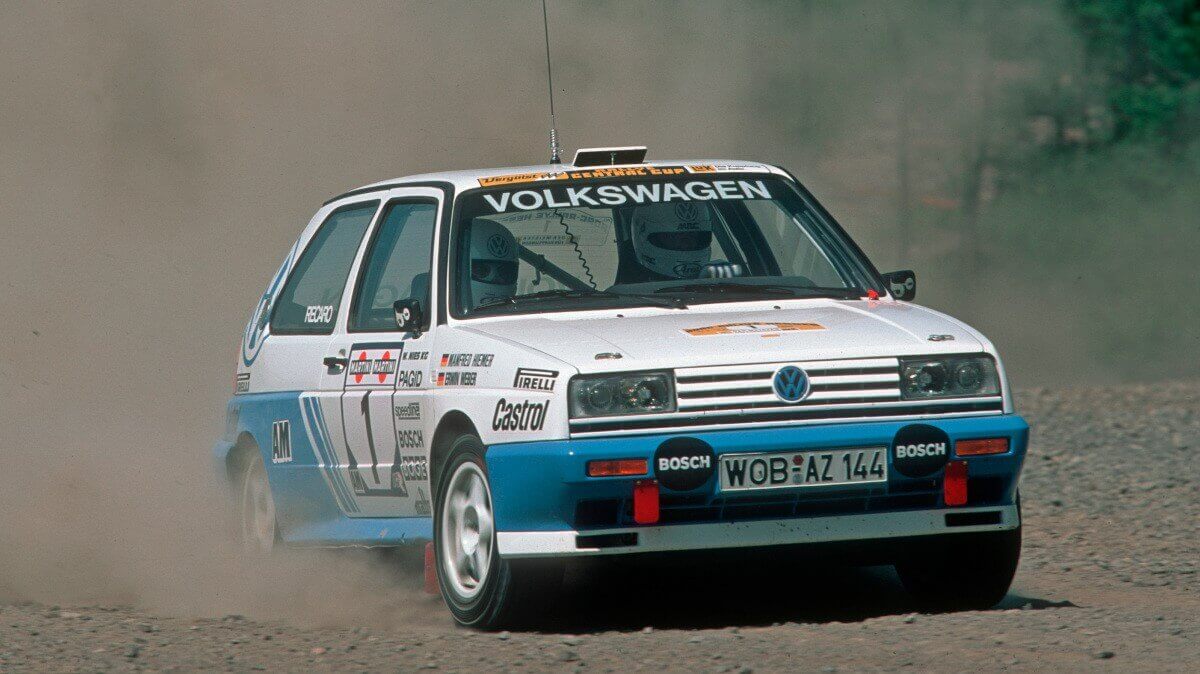



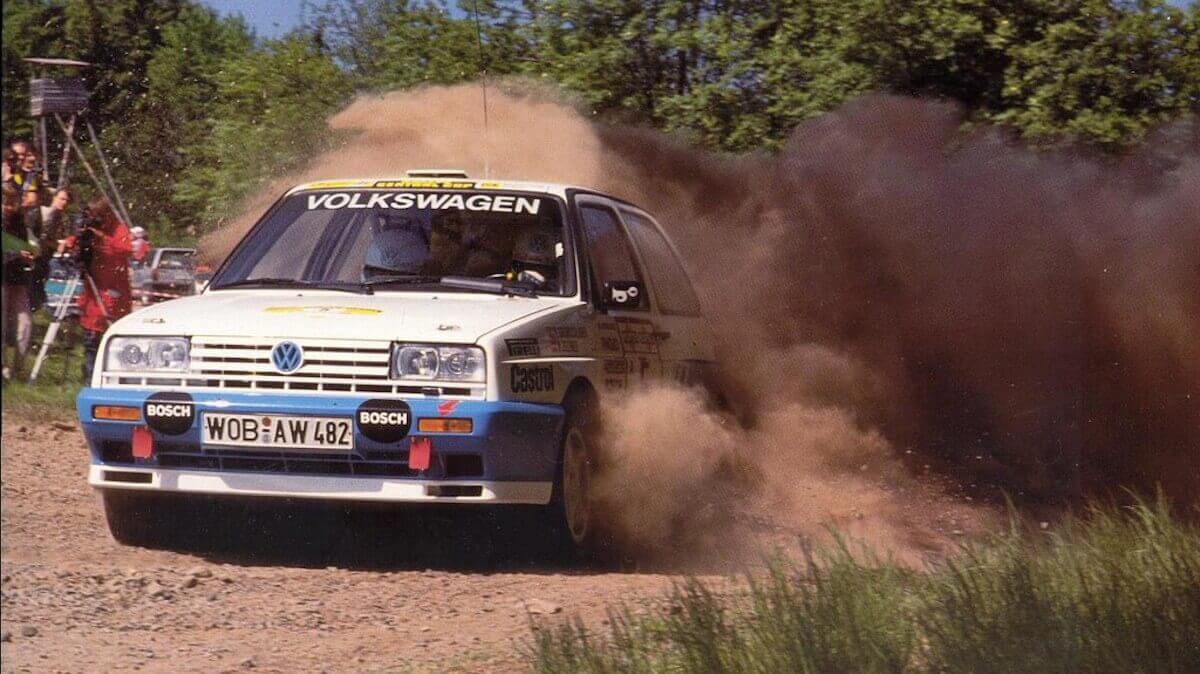







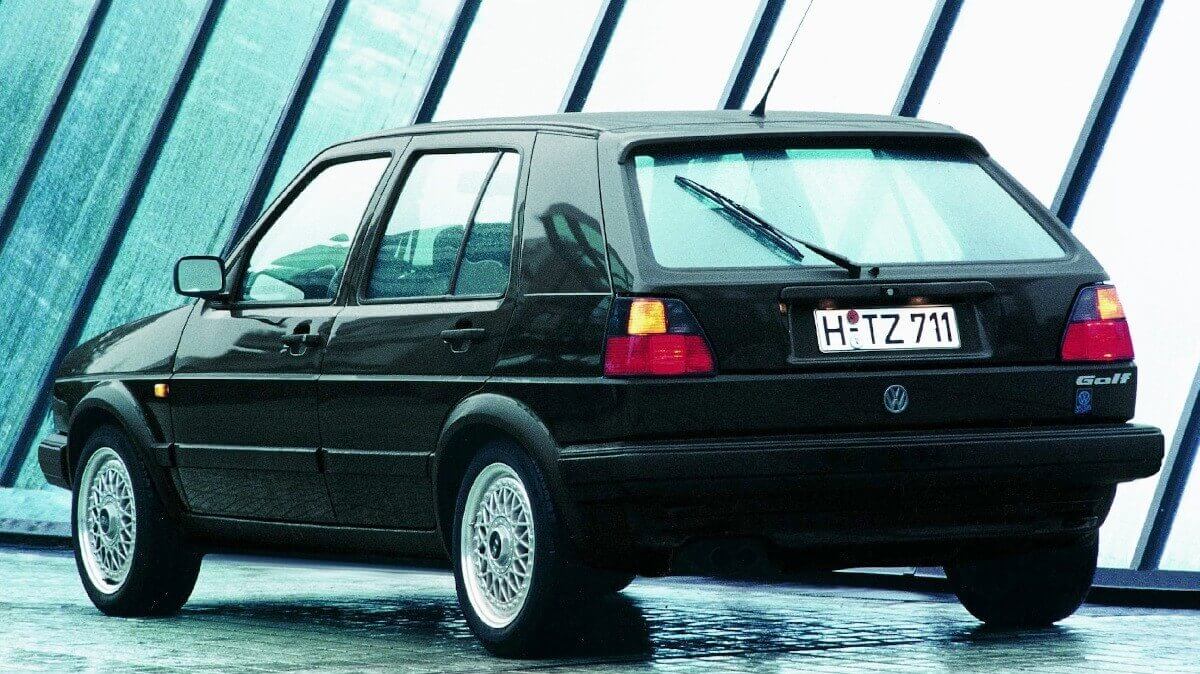



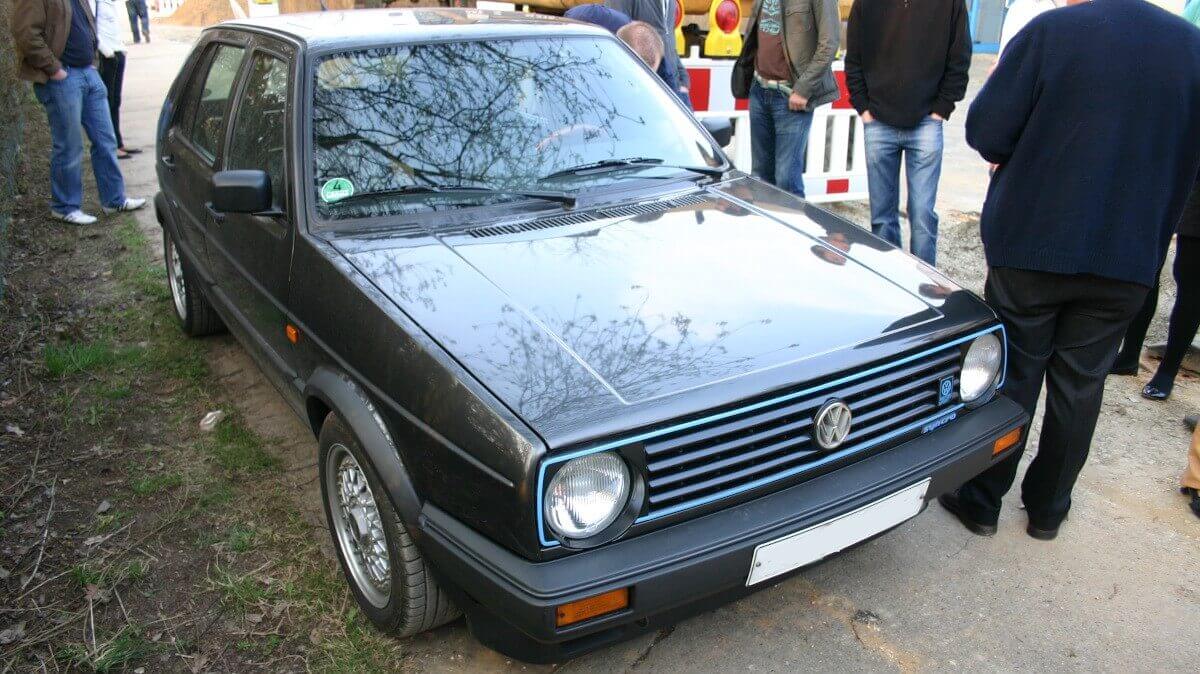



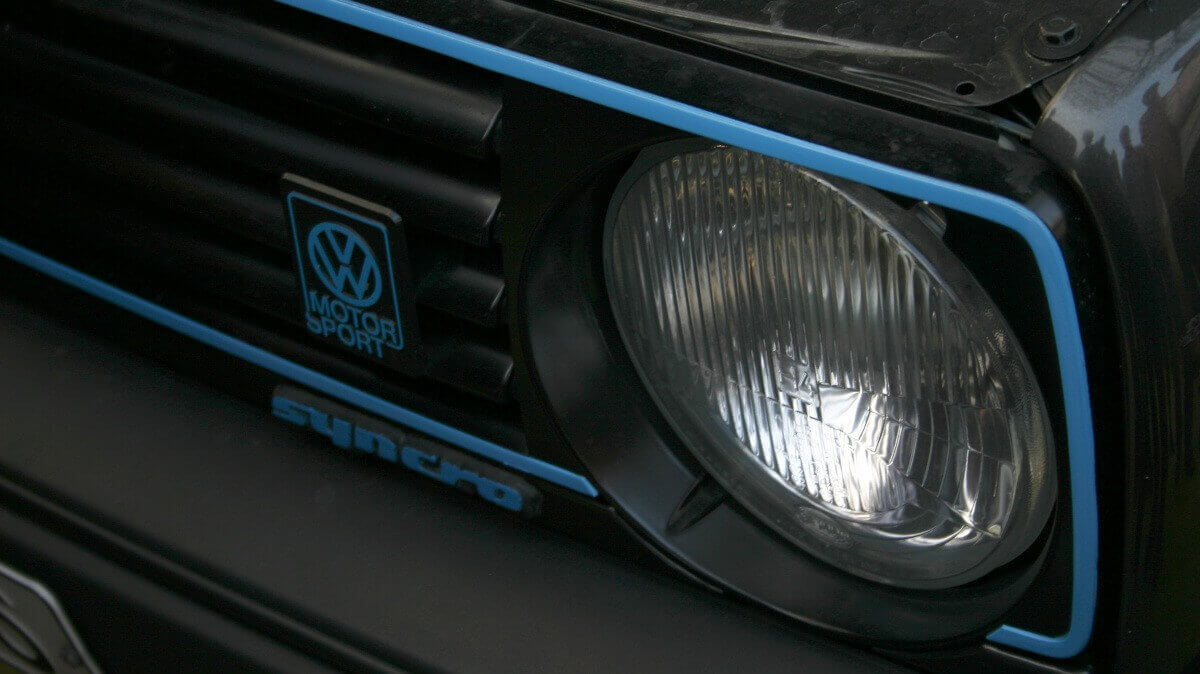



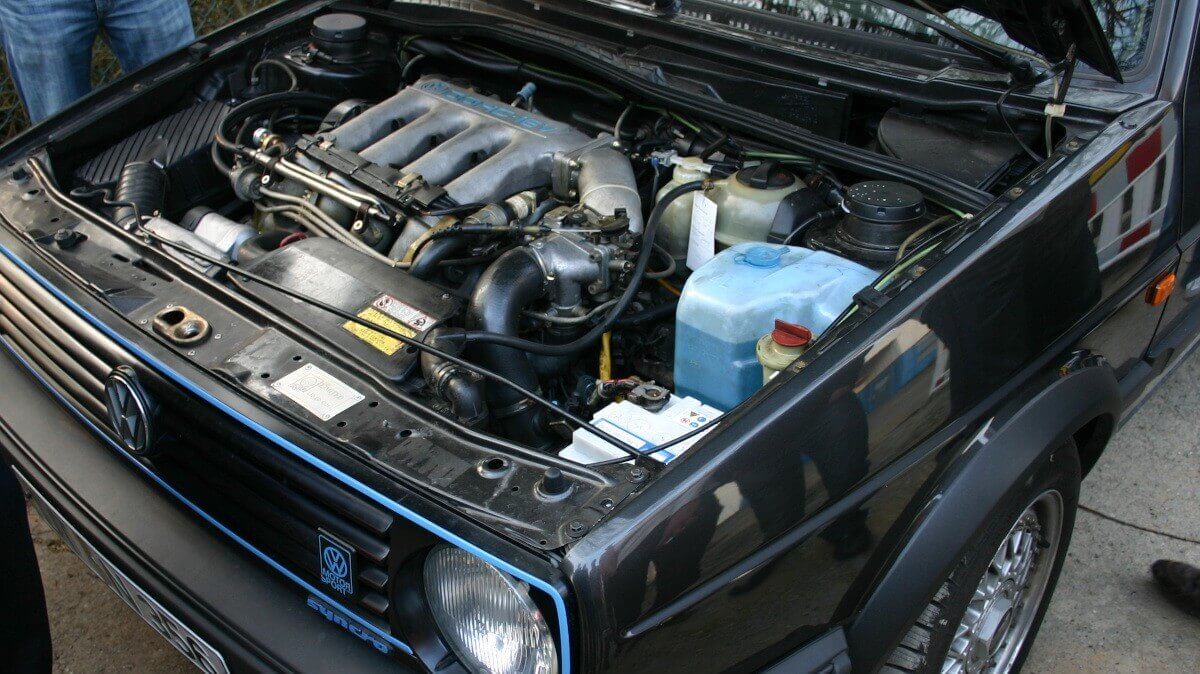







According to internal sources around 200 units of this G60 16V engine were produced. Some of which were tested in the rally cars. There they are had around 300 hp. But also private customers could benefit from this power plant. While the Corrado G60 16V and the Passat G60 16V remained rare cars for only a few managers of the VW Group, buyers of the Rallye Golf had the chance to have the sixteen-valve engine retrofitted at VW Motorsport in Hanover for an extra charge of around 25,000 DM. In fact, there were 12 enthusiasts who took advantage of this opportunity. In rally sports meanwhile, the switch from the Golf GTI to the Rallye Golf wasn’t as successful as planned. Few successes like a third place at the Rally New Zealand were countered by various technical problems and the inferiority compared to newer developments of the competitors. After the 1990 season, the factory team’s involvement was terminated – also because the new Golf III was already in the starting blocks. Some private drivers continued to use the Rallye Golf until 1995.
Among VW insiders it is also known that Volkswagen Motorsport offered another opportunity to private customers to enjoy the 210 hp and 252 newtonmeters strong engine. The four-door Golf G60 Limited also appeared on the roads in 1989. To our knowledge, there never was a motor show premiere, nor any presentation events at dealers or large glossy brochures. Those who wanted to buy one had to be well networked at VW and had to have a well-filled purse. Even 30 years ago, it was considered a little crazy to actually spend 68,500 DM on a Golf II that looked nothing special from the outside. However, VW Motorsport consistently numbered the Limited on an aluminium badge placed on the lock carrier in the engine bay and produced a total of only 71 copies by hand in their own premises in Hanover. This guarantees the value stability of this variant to this day. The exterior in black metallic was deliberately absolutely unobtrusive. It it weren’t for the light blue border around the radiator grille, the VW Motorsport logos on the front and rear, the multi-part BBS aluminium rims and the partially darkened rear lights, it could also be one of the many millions of Golf II that were sold to housewives, workers and pensioners all over Europe. However, the Golf G60 Limited easily gained a place on the left lane of the Autobahn and remained the most powerful series Golf until the introduction of the Golf IV R32.
Images: Volkswagen, Matthias Kierse




